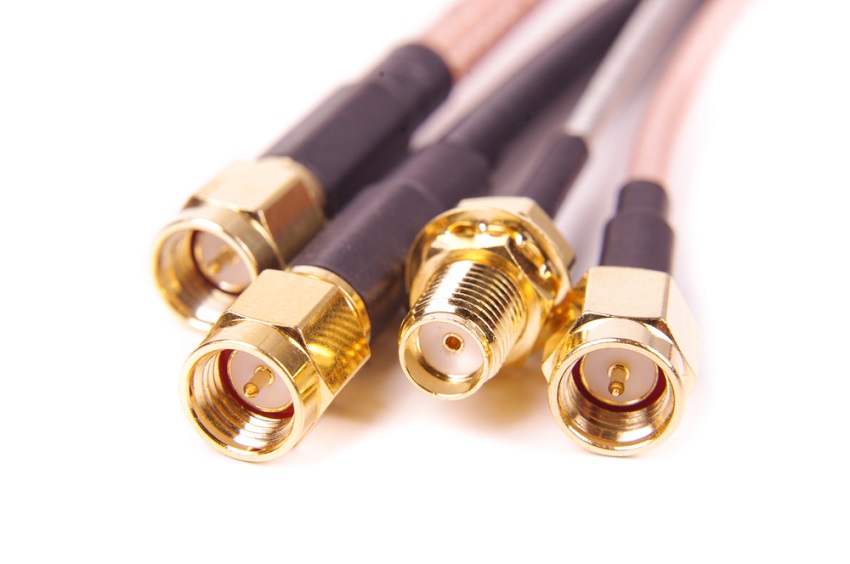In today's digital world, many technologies rely on effective communication systems. One such essential component in these systems is coaxial cables and connectors. These tools play a crucial role in transmitting signals with minimal interference, ensuring clear and reliable communication. This blog will provide a comprehensive guide on coaxial cables and connectors, making it easy for everyone to understand their importance and functionality.
What are Coaxial Cables?
Coaxial cables are a type of electrical cable that transmits signals from one point to another. They are commonly used in various applications, such as television, internet, and radio communication. The structure of a coaxial cable is designed to protect the signal from interference, ensuring it reaches its destination without loss of quality.
Structure of Coaxial Cables
- Core Conductor: The innermost part of the cable, usually made of copper, which carries the signal.
- Insulation: Surrounds the core conductor to prevent signal loss and interference.
- Shielding: A metallic shield that protects the signal from external electromagnetic interference.
- Outer Jacket: The external layer that protects the internal components from physical damage.
How Do Coaxial Cables Work?
Coaxial cables work by transmitting electrical signals through the core conductor. The insulation layer prevents the signal from leaking, while the shielding layer blocks external interference. This design ensures that the signal remains strong and clear throughout its journey.
Types of Coaxial Cables
There are several types of coaxial cables, each designed for specific applications. Here are the most common types:
RG-6
- Usage: Ideal for television and satellite signals.
- Features: Thicker insulation and better shielding than other types.
RG-59
- Usage: Commonly used for short-distance video signals.
- Features: Thinner and more flexible, but less effective at blocking interference.
RG-11
- Usage: Suitable for long-distance transmission.
- Features: Thicker and offers better signal quality over long distances.
What are Coaxial Connectors?
Coaxial connectors are devices used to connect coaxial cables to other equipment, ensuring a secure and stable connection. They are essential in maintaining the integrity of the signal and are widely used in various communication systems.
Types of Coaxial Connectors
There are several types of coaxial connectors, each designed for specific applications and cable types. Here are some of the most common types:
F-Type Connectors
- Usage: Commonly used in television and cable internet connections.
- Features: Easy to install and provide a secure connection.
BNC Connectors
- Usage: Often used in professional video and radio frequency applications.
- Features: Quick and secure locking mechanism.
RCA Connectors
- Usage: Used for audio and video connections.
- Features: Color-coded for easy identification and installation.

How to Choose the Right Coaxial Cables and Connectors
Choosing the right coaxial cables and connectors depends on your specific needs and applications. Here are some factors to consider:
Signal Type
- Determine whether you need the cable for television, internet, or radio signals.
Distance
- Consider the distance the signal needs to travel. Longer distances may require cables with better shielding and thicker insulation.
Installation Environment
- Think about where the cable will be installed. Outdoor installations may need cables with additional weatherproofing.
Installing Coaxial Cables and Connectors
Proper installation of coaxial cables and connectors is crucial for maintaining signal quality. Here are some steps to follow:
Preparing the Cable
- Cut the Cable: Measure and cut the cable to the desired length.
- Strip the Insulation: Use a coaxial cable stripper to remove the outer jacket, shielding, and insulation, exposing the core conductor.
Attaching the Connector
- Insert the Connector: Slide the connector onto the exposed end of the cable.
- Secure the Connection: Use a crimping tool to secure the connector in place, ensuring a tight fit.
Maintaining Coaxial Cables and Connectors
Regular maintenance of coaxial cables and connectors can help extend their lifespan and ensure optimal performance. Here are some tips:
Regular Inspections
- Check the cables and connectors periodically for any signs of wear or damage.
Cleaning
- Keep the connectors clean and free from dust and debris to maintain a good connection.
Proper Storage
- Store unused cables and connectors in a dry, cool place to prevent damage from moisture and extreme temperatures.
Common Issues and Troubleshooting
Even with proper installation and maintenance, you may encounter issues with coaxial cables and connectors. Here are some common problems and how to troubleshoot them:
Signal Loss
- Cause: Damaged cable or poor connection.
- Solution: Inspect the cable and connectors for damage and replace if necessary.
Interference
- Cause: External electromagnetic interference.
- Solution: Ensure the cable shielding is intact and consider using cables with better shielding.
Loose Connections
- Cause: Connectors not properly secured.
- Solution: Check and tighten all connectors to ensure a secure fit.
Benefits of Using Coaxial Cables and Connectors
Coaxial cables and connectors offer several advantages, making them a popular choice for various applications:
Reliable Signal Transmission
- The design of coaxial cables ensures minimal signal loss and interference, providing reliable transmission.
Versatility
- Coaxial cables can be used for a wide range of applications, including television, internet, and radio communication.
Durability
- The robust construction of coaxial cables and connectors makes them durable and long-lasting.
Conclusion
Coaxial cables and connectors are essential components in modern communication systems. They provide reliable signal transmission, ensuring clear and uninterrupted communication. By understanding their structure, types, and proper installation methods, you can make informed decisions and ensure the best performance for your specific needs. Whether you are setting up a home entertainment system or a professional communication network, coaxial cables and connectors are indispensable tools that ensure your signals are transmitted effectively.














